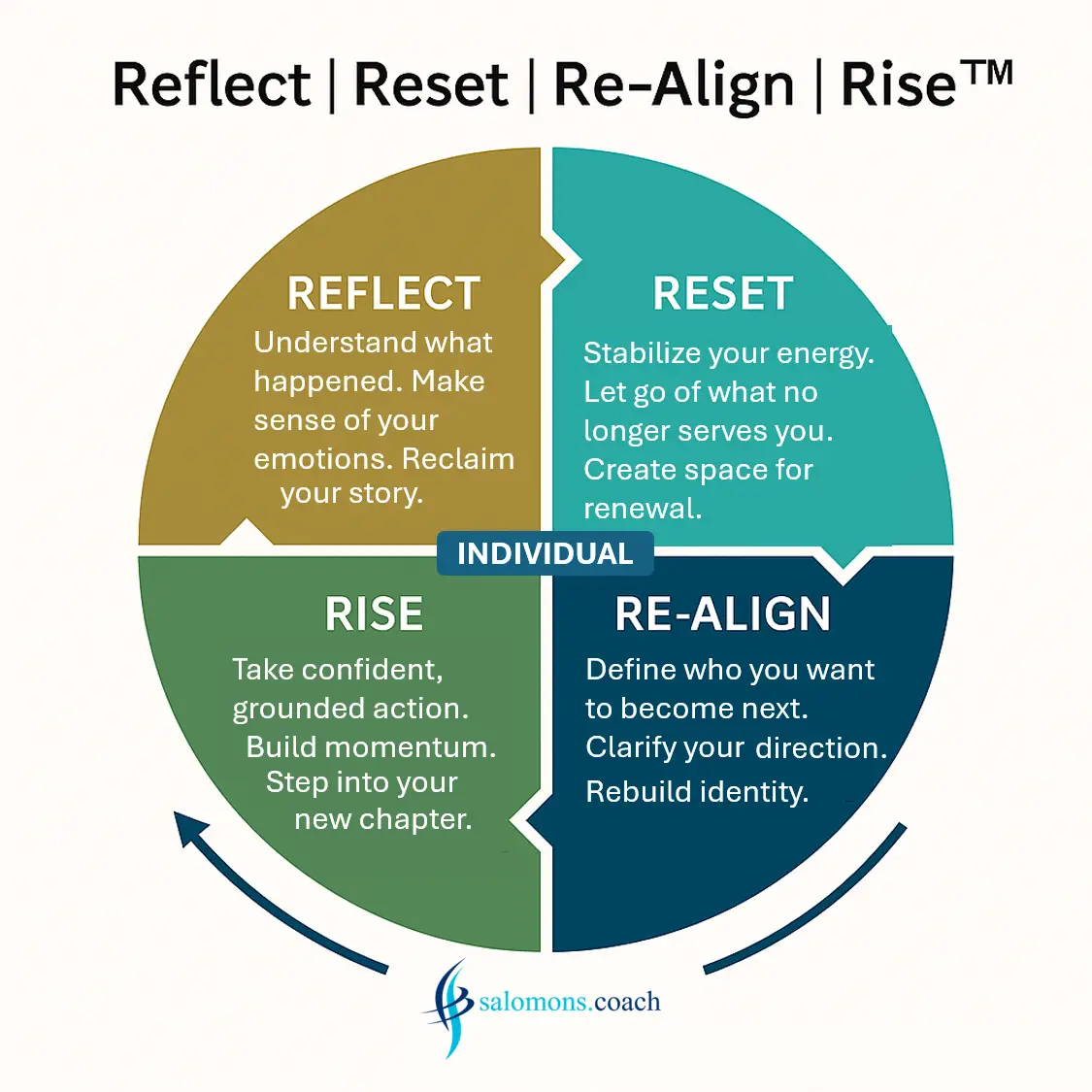The one insight everyone misses: why time determines your recovery after redundancy

When we talk about redundancy, we often focus on the emotional curve: shock, disbelief, anger, acceptance, reset. Or we talk about practical steps: updating your CV, networking, applying, rethinking your career path.
But there is one factor that is almost never discussed, and yet it shapes the entire recovery process more than anything else:
Time

The amount of time someone has — or doesn’t have — determines how deeply they can move through the 4R phases:
Reflect → Reset → Re-Align → Rise™
And the truth is:
Not everyone gets the same amount of time.
Why time shapes the entire 4R journey
Every person’s timeline is influenced by very real, practical constraints:
- VSO end date
- Waiting period before social security kicks in (The Dutch WW benefit is the national unemployment insurance that provides temporary income support when you lose your job, as long as you meet the work-history and eligibility requirements)
- Duration of WW entitlement
- Financial responsibilities
- Lifestyle impact
- Family situation
- Emotional resilience at the moment redundancy hits
Some people must move quickly — because money runs out, obligations rise, or the pressure to “bounce back” feels overwhelming. Others are fortunate enough to have breathing space, which allows them to:
- reflect more deeply
- truly reset
- explore identity and values
- experiment without panic
- build clarity rather than scramble
- re-enter the market with intention
But here is the deeper truth:
If the process goes too fast, the phases you “skip” will come back later — often at the worst possible moment.
A real timeline: how time shapes transformation
(Shared with permission, anonymised)
One of my coachees recently reflected on his 9-month transition. When he read my article on redundancy, he said:
“I could literally tick off all the 4R phases one by one. I saw my own journey mirrored in your model.”
His timeline looked like this:
- Feb–May (no WW yet): emotional closure → Reflect & Reset
- June: starting as entrepreneur → first Re-Align
- July: family holiday → a second quiet Reflect & Reset
- Aug: testing assignments → shift towards Rise after fine-tuning the inititial re-alignment
- Sept–Nov: applying, lobbying, refining identity → deep Re-Align (feel the confirmation) → Big Rise
He described the experience like this:
“The energy to rebuild came back slowly. I didn’t want to rush this process. I want to make conscious choices, not fast ones.”
This clarity would not have emerged without time. And many people never get this window.
Time is not a luxury. It’s part of the healing.
Redundancy is not a career event — it’s a psychological transition. And unlike organizations, human beings don’t operate in neat timelines. We process identity loss, self-worth, fear, hope, and possibility in cycles. And cycles need time.
Leaders often underestimate this. Governments don’t factor it in. And employees feel guilty for needing it.
Redundancy is a form of rupture — and rupture requires recovery.
What happens when the process is rushed?
When people don’t get time, they often experience:
- chronic self-doubt
- rushed job choices
- accepting roles below their potential
- delayed emotional processing
- collapse during the onboarding of their new job
- identity confusion (“Who am I now?”)
- burnout risk
- regret
- repeating the same patterns
Because the skipped phases of Reflect and Reset always show up later.
What happens when the process is paced well?
People who take time — even a little — often report:
- renewed self-confidence
- a clear personal narrative
- stronger decision-making
- a sharper understanding of their value
- better role fit
- healthier boundaries
- more stable energy
- a more meaningful career direction
- integration instead of escape
This is why Re-Align and Rise become powerful instead of fragile.
What leaders should realise
Redundancy is legally structured but psychologically messy.
Giving people time isn’t a favor — it is the prerequisite for:
- better outcomes
- healthier transitions
- reduced future absenteeism
- better employer brand
- more humane management practices
And often, it costs organizations nothing — except awareness.
What employees should realise
If you’ve been made redundant:
- You are not “slow.”
- You are not “unproductive.”
- You are not “stuck.”
- You are not “wasting time.”
You are recalibrating. And recalibration is work.
The 4R journey is not linear. It moves in spirals — sometimes forward, sometimes back — but always with meaning. Give yourself the time you need, even if that time feels uncomfortable.
Because time is not a delay. It is the very space where healing, clarity, and new identity are formed.
Need help with your process now or in the near future? Or you are seeking support for employees that will be made redundant? Please check in to see if my expertise can be of help.
Organizations that use the 4R model experience smoother transitions, lower costs, stronger employer branding, and healthier, more engaged employees—both those leaving and those staying.
I also wrote a fundamental article on redundancy and recovery:
When redundancy becomes a turning point: What leaders get wrong and how employees can rise stronger (context: The Netherlands)
Other posts on this subject:



